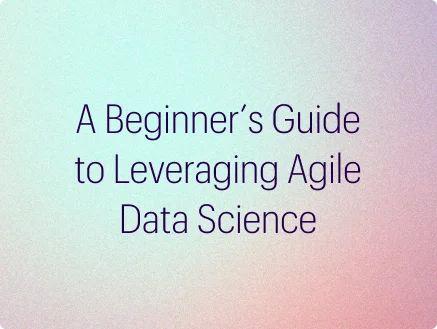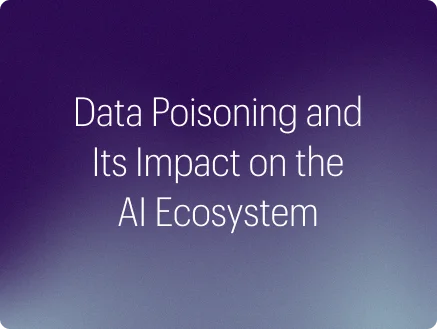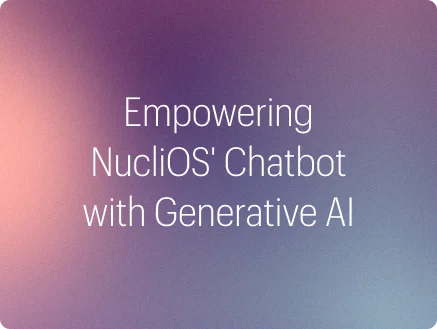The enterprise world is witnessing a powerful shift with AI, particularly GenAI and Agentic AI. Large language models have delivered stunning breakthroughs in reasoning and language understanding, enabling conversational assistants, copilots, and agents to become ever more capable. But for enterprises that want to move beyond experimentation to enterprise-wide implementation, there is an important factor that deserves greater focus – context, a nuance that drives truly trustworthy AI-driven decisions. Today’s foundational models are trained on vast internet-scale datasets. That makes them excellent generalists, able to hold conversations, summarize documents, and even solve problems with impressive fluency and speed. Yet they fundamentally lack the context that gives meaning to how an individual enterprise functions; its business rules, its tribal knowledge, its KPI definitions, its history, and its evolving operating model. Understanding the how of your enterprise becomes a requisite for answering all the why questions accurately! Imagine asking an enterprise conversational agent to explain the revenue breakdown for a region. Unless that agent understands how this enterprise defines “revenue,” how the data is calculated, and what time periods and data quality thresholds apply, it will get the answer wrong. These nuances are what make enterprise AI trustworthy, and without them, we risk systems that sound convincing while giving dangerously inaccurate answers.
If we want to move from “human in the loop” to a future of true human-AI partnership, then context will be king. Context engineers will become the trusted human collaborators in the loop, working with powerful and reliable AI Agents.
Enterprises will have to build robust frameworks to engineer, store, and maintain organizational context so that systemic AI can reason accurately, consistently, and transparently. Context gives AI the guardrails and depth of knowledge needed to make decisions that humans can trust.
Systemic AI refers to AI systems that are deeply integrated into enterprise workflows, interacting with multiple agents, orchestrators, and decision layers across the business. Unlike standalone models, systemic AI works as part of an interconnected system, requiring a steady flow of context and governance to stay relevant, accurate, and aligned with organizational goals.
The Challenge of Context in Systemic AI
While foundational models can perform incredible zero-shot reasoning, they lack awareness of what is inside the enterprise firewall. Think of deeply embedded definitions like what “customer churn” means, or which metric formulas apply for quarterly reporting. This knowledge is usually scattered across documents, buried in SharePoint folders, or living in someone’s head.
Systemic AI cannot work effectively without a reliable reference, a “source of truth” that stores enterprise context in a structured, accessible, and governed way. Once these context stores are in place, models can retrieve relevant context to produce outputs that align with enterprise expectations.
Engineering Context: The Blueprint
Engineering for context is not a one-time upload of documents; it is a systematic discipline. Here’s what that looks like:
Onboarding Context
Capture short-term context dynamically during run time (for example, user clarifications or approvals in human-in-the-loop workflows).
Ingest deeper context from persistent sources like data catalogs, business glossaries, process documents, or query logs, and store them in well-governed vector databases or graph-based knowledge stores.
Use foundational models themselves to help transform unstructured data (PDFs, PowerPoints, text) into structured JSON or graph formats that can be queried later.
Filtering Relevant Context
Once context is captured, not all of it should be delivered to every agent. Some information is best suited for orchestrators, while other contexts may be critical to downstream task agents.
Designing retrieval systems that connect the right context to the right layer of the architecture ensures systemic AI is precise and efficient.
During run time, retrieval-augmented generation can dynamically pull in only the relevant slices of context to improve both reasoning accuracy and speed.
Updating Context
Business processes, metrics, and even language change over time. An effective systemic AI must evolve with the business.
Context stores should have clear governance models: who owns what type of context, who can update it, and how new context is validated before being made available to agents.
Feedback loops from users, source systems, and metadata should continuously refresh the context store to keep systemic AI from drifting into irrelevance.
Context as a Strategic Enterprise Asset
Context stores are more than just sidecar databases. They are strategic reusable assets that can serve multiple AI applications within an enterprise, whether they are conversational assistants, document processors, or decision-making agents. With a well-governed and continuously updated context store, systemic AI can scale and adapt to multiple business units and processes.
For example, the same context about a product hierarchy can power an executive reporting chatbot, a forecasting system, and a fraud detection model. All drawing on a single source of truth for consistent, correct reasoning.
Today, enterprises cannot fully own proprietary models unless they adopt open-source approaches. What they can own, however, is their enterprise context. By systematically mining and engineering their unique context and investing in AI-ready datasets, they create a sustainable competitive advantage that no off-the-shelf model can replicate.
The Road Ahead
Context engineering and context engineers will be to systemic AI what data engineering and data engineers were to modern analytics. We will need robust onboarding processes to capture fragmented knowledge, flexible retrieval frameworks to surface the right information at the right time, and continuous governance to maintain trust.
In the near future, enterprises will likely organize teams dedicated to context operations by combining knowledge management, data engineering, and AI governance into a unified practice. These teams will maintain context stores as living assets, helping systemic AI adapt to evolving business needs and keeping models relevant and responsible.
In the end, no matter how powerful a foundation model is, its true intelligence will only come to life once it understands your business, your people, and your way of operating. That is the promise and the challenge of context engineering. As we move closer to a world where AI is a partner, not just a tool, context will truly be king.




